Travel through York, and it’s clear that the rail freight sector is facing tough times.
Scores of bogie coal hoppers built ten to 15 years ago stand idle, grass growing around them, seemingly with no future. Some have already been sent for scrap and it’s hard not to expect the others to follow. This was serious investment and yet is a victim of circumstance. The market these wagons were built for has gone. And the harsh truth is that it isn’t coming back.
Rail freight in the UK has taken a massive blow in the past 12 months, and is at its lowest ebb since 1984-85, when the effects of the miners’ strike hit the industry hard. Politics affected the market 32 years ago, and has now done it again. The market recovered then, and now it must strive hard to do so again… but without coal.
In RAIL 801, GB Railfreight Managing Director John Smith rightly called for the Government to actually understand the commodities that rail freight companies move, and how it can support them.
Statistics released by the Office of Rail and Road reveal a 22% fall in the amount of freight lifted in 2015-16, compared with the previous 12-month period.
That amount included 19.8 million tonnes of coal - the lowest since the strikes 32 years ago, and a decline of 54.6% in just one year. Freight lifted is the mass of goods carried on the rail network, measured in tonnes. This excludes the weight of the locomotive and wagons, and takes no account of distance. The lowest tonnage of freight lifted in a year was 65.2 million in 1984-85. The highest was 149.5 million in 1988-89. Last year it was 86.0 million.
However, it is the decline of coal (and the causal factors) that presents the greatest concern. In every ORR measurement, its fall has been spectacular. Total volume of freight moved in 2015-16 was 17.8 billion net tonne kilometres, a decrease of 20.0% compared with 2014-15. Within that, coal slumped by 64.2% to 2.3 billion net tonne kilometres.
The ORR admits: “Major contributory factors to the latest decrease in coal moved were the doubling of UK’s top-up carbon tax from April 1 2015 and the gradual move to renewable energy, which impacted the amount of coal moved to power plants, with the net effect that outputs from these plants are reduced when compared with the previous year.”
Smith has spoken before of the carbon tax affecting coal by rail. And the fact is that with Government plans to close more coal-fired power stations within the next decade, coal will never again be king.
The carbon tax charges power producers for each tonne of carbon dioxide (CO2) they emit. Overnight, this almost doubled to £18.08 per tonne. Initially that encouraged imports, but that abruptly ended around April 1 last year.
Other sectors have also been hit, with the international and metals markets affected by matters of a political nature. The Calais migrant crisis is deemed to be largely behind the 20.5% fall in the international market, while the closure of steel plants and the price of imported steel has hit the metals market.
The number of freight trains moving is also 16.3% down. While this is partly because trains are longer and more efficient these days, it is still the lowest in 13 years.
Worryingly, four of the seven major operators have also reported a decline. Freightliner Heavy Haul, the company whose wagons litter the yards at York, has reported a 53.5% decrease in the past year, followed by Direct Rail Services (19.0%), DB Cargo (15.6%) and GBRf (0.5%), according to ORR statistics.
Gone forever are the days of British Rail, where one million wagons per year went through the yards of Toton (as they did in the 1950s), supporting the coalfields of Nottinghamshire. It was a market that seemingly would never end, and yet it has.
Collieries have gone; and very quickly, processions of coal trains are a thing of the past. Today, modern eco-friendly locomotives haul modern hoppers with large capacity from ports to power stations, but increasingly these are carrying biomass rather than coal, as the energy sector looks elsewhere for its fuel.
A crucial question is: did the rail freight sector become too reliant on coal? The figures showing its rapid decline give an idea of just how large the market was. This is the first time in six years that domestic intermodal is the largest commodity moved on the network.
Did coal act as a disincentive to innovation in the industry? It was a constant, so perhaps there was little need to innovate - to actively seek and hunt new markets. And during the recession it was still there for the rail freight sector. Other commodities floundered (and our money dried up, leading to a reduction in the number of electrical goods bought on credit that filled the boxes), but our need for energy consumption remained… and so the coal kept moving.
But the need to be seen to be green has surged, and implementation of the carbon tax has made Government and industry look at other possibilities - so is the rapid death of coal actually a silver lining for the freight industry?
Smith talks of the need to attract private funding from customers and clients to help support rail freight.
Rail Minister Claire Perry believes rail freight could serve city centre stations during the off-peak. Could this be the future? Smith is not a fan of the idea of small payloads, as carried by High Speed Trains operated by East Midlands Trains and Great Western Railway, but Perry is nevertheless pushing the idea.
“Our rail lines already reach into stations located in the heart of the city,” she said. “Imagine if we could run electric freight trains into stations outside peak hours. Or run passenger trains that can be partly converted to carry freight. Goods could be offloaded onto electric vehicles, for distribution across the city.”
Is that Red Star returning? Could we see Rail Express Systems again? We had newspaper traffic serving many of our major stations overnight until 1987 and large volumes of parcels until 2004, when the sheer scale of that market was lost to air and road (it has returned, but not in the same volumes).
Could stations with spare platforms be used by freight trains? Is that an answer for the hundreds of High Speed Train vehicles that could become redundant in the next couple of years? Intermodality Managing Director Nick Gallop explains on pages 6-7 what he thinks the challenges for the industry are, and how they could be exploited.
The rail freight industry is at a crossroads. For so long it has done many things well, leading on investment. But now it faces a major crisis. How it reacts, and what changes it makes, could determine its very existence. Let’s all hope the decisions made are the correct ones, and that the Government listens to what it needs.
- Nigel Harris is away.
Comment: RAIL 802: June 8 2016 - June 21 2016


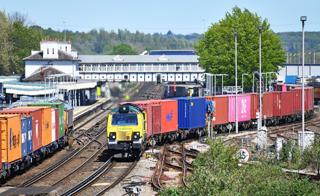
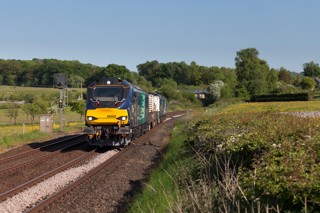
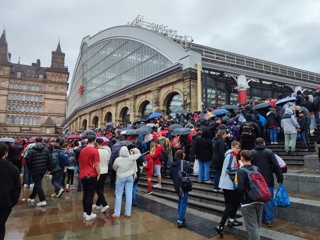
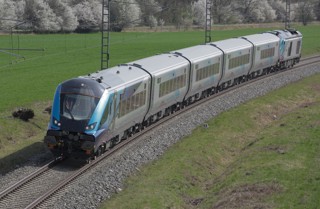
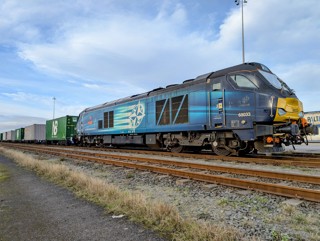











Login to comment
Comments
No comments have been made yet.